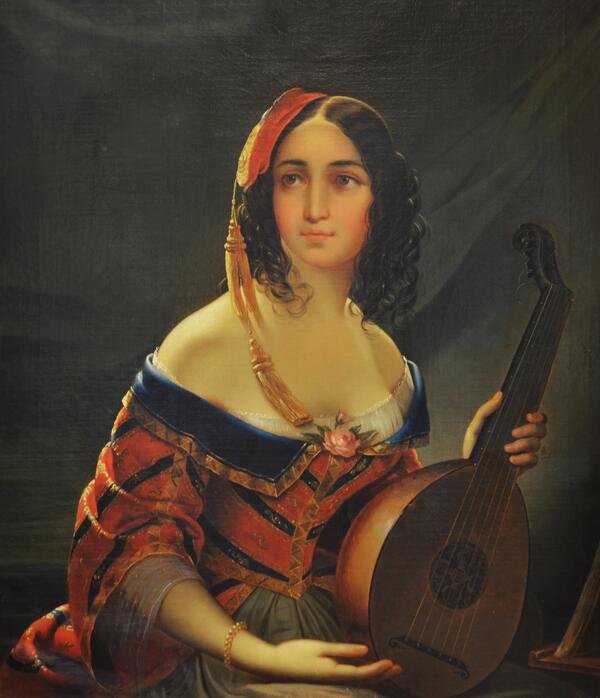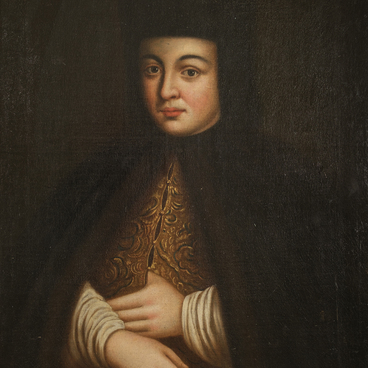Mikhail Scotti was a Russian painter and watercolorist, known for his portrait and history paintings. He came from a dynasty of Italian decorative artists. The family of Carlo Scotti arrived in Russia in 1780. Mikhail Scotti was baptized at the Church of St. Catherine in St. Petersburg under the name of Michel Angelo. All his close friends called him “Angel Mishenka”. When the artist was 16 years old, his father passed away. The family agreed to stay in Russia and re-accepted Russian citizenship.
After receiving his early artistic training under the guidance of his father, Mikhail Scotti became a “home student” of the history painter Alexei Egorov. A “home student” was supposed not only to study painting but also to help with household chores such as stoking the fire, running errands, and sweeping floors. Mikhail Scotti attended classes at the Imperial Academy of Arts as a non-matriculated student. His accomplishments in drawing were recognized with small and grand silver medals. Later, he gave private painting lessons to members of wealthy families in St. Petersburg.
In 1838, Mikhail Scotti went to Italy with the family of Count Kutaysov. He stayed there until 1844. During that time, he developed his style which experts have compared to that of Karl Bryullov. In December 1838, Alexander Nikolayevich, the heir to the Russian throne, visited an exhibition of Russian artists in Rome. During his visit, he was presented with a drawing by Mikhail Scotti titled “Street Scene in Rome”. In 1842, the artist created the painting “Italian Woman with a Rose in Her Hand” which was praised by the Council of the Academy of Arts.
All of the artist’s works from this period can be attributed to the so-called Italian genre. This was a phenomenon in Russian painting pioneered by Karl Bryullov. These were small paintings depicting the leisurely life of Italians, their traditions, everyday life, and festivities. Such images became extremely popular in Russia in the late 1830s and the 1840s. In 1844, Mikhail Scotti painted icons for the Orthodox Church of the Russian Embassy in Constantinople. In 1845, he worked on icons for the Cathedral of the Savior in Nizhny Novgorod and also painted the Annunciation Church, Presentation Church, and St. Miron Church in St. Petersburg. The same year, he was made a member of the Academy of Arts.
In 1849, Mikhail Scotti started teaching at the
Moscow School of Painting and Sculpture where his students included Konstantin
Makovsky, Vasily Perov, and Nikolai Nevrev.



